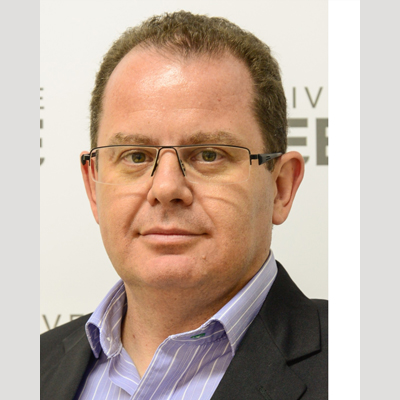Rafael Linden
Professor of Toxicology and Pharmacology
Director, Laboratory of Analytical Toxicology
Feevale University, Novo Hamburgo, BZ
The theme for this year’s congress is ‘TDM and Clinical Toxicology in a Globalized World’ and in addition to some great plenaries around the theme, there are dedicated parallel sessions such as ‘TDM in developing countries’ on Tuesday. Not only is this the first IATDMCT congress in Latin America, it is also the first time in the 29 year and 16 congress history that our host country is a developing country. I congratulate co-chair Rafael Linden for shining the spot-light on the challenges many countries face, but in this light we also see the many ways we all overcome these challenges. This month’s interview with Rafael gives a taste of what’s to come at the congress. See you in Brazil!
Can you tell us a little bit about your respective roles? What is a typical day like for you?
I am a professor of toxicology and pharmacology at Universidade Feevale in southern Brazil. In this role I teach undergraduate students of Pharmacy, Biomedical Sciences, and Medicine, as well as the graduate programs ‘Environmental Quality and Toxicology’ and ‘Analytical Toxicology’. I am also responsible for the Analytical Toxicology Laboratory at the university. My typical day starts checking the status of routine work and research experiments at the lab, followed by administrative duties and supervision of graduate students, mixed with classes and meetings.
Is there anything that is done at your centre that you would consider innovative?
In Brazil, our group has pioneered the use of dried samples for TDM and toxicology. This work was motivated by the logistical difficulties we face in getting samples to the lab. We have several publications concerning dried blood, plasma, urine, and saliva spots. Moreover, our lab provides services in several fields: TDM, occupational and forensic toxicology. Currently, the lab is being accredited under a specific ISO 17025 guideline for forensic drug testing in hair and will be the first University laboratory accredited for these assays in Brazil.
What technological innovations have entered into use during your career that have permitted a change, or evolution, in practice?
The availability of benchtop LC-MS/MS systems really boosted the productivity of our lab. Even considering the challenges to obtain research funding in Brazil, we currently have four systems that are in full time use. Fixed-volumes systems for blood microsampling have been a great contribution for clinical application. In the field of TDM, the widespread use of user-friendly clinical pharmacokinetic software has been a fundamental contribution in our ability to disseminate TDM services. However, I am still waiting for the point-of-care mass spectrometer!
How did you become interested in your area of expertise?
During my undergraduate studies in Pharmacy, I became interested in toxicology and instrumentation. Soon after graduating, I was hired as a forensic toxicologist at the criminal laboratory of the State. I subsequently had the opportunity to commence as a professor at the University and to start our laboratory. As a Pharmacist, I always had the curiosity to understand variability in drug responses, and one thing led to another…
Is there anything that you’ve seen or heard about recently and thought “I’d like to incorporate that idea at my center”?
I would like to start working with paper spray MS and other mass spectrometry interfaces which could facilitate the direct use of dried samples. I also would like to increase the use of volumetric absorptive microsampling (VAMS) and other microsampling devices.
What sort of research do you have on the horizon that you think might influence clinical practice in the future?
The main focus of our work is to increase access to more sophisticated testing in the fields of toxicology and TDM. Even tests and services that are well established and considered classical in more developed countries, such as measurement and pharmacokinetic counseling of vancomycin and aminoglycoside antibiotics, can be considered innovative in Brazil. Microsampling, software and electronic tools are being developed by our group to allow increased access to TDM.
What do you consider is the future for TDM and CT? What are you excited about? What are the challenges we face?
I believe the future is in technologies which increase access to TDM and CT services. This would include point-of-care testing along with smart data processing. In the developing world, funding for TDM services is scarce, particularly considering that many patients do not have access to very basic health services. In this context, proof of cost-effectiveness is of great importance.
The content of the IATDMCT Blog does not necessarily have the endorsement of the Association.



